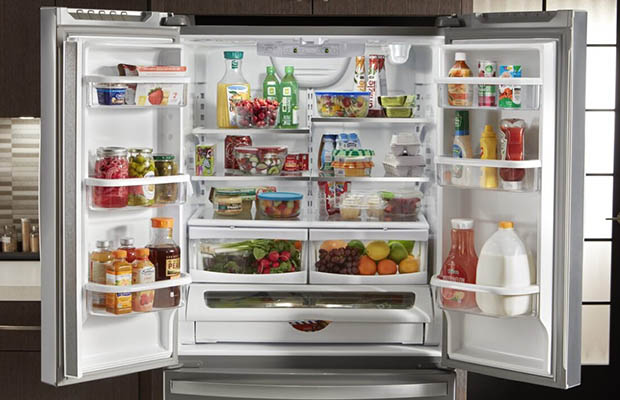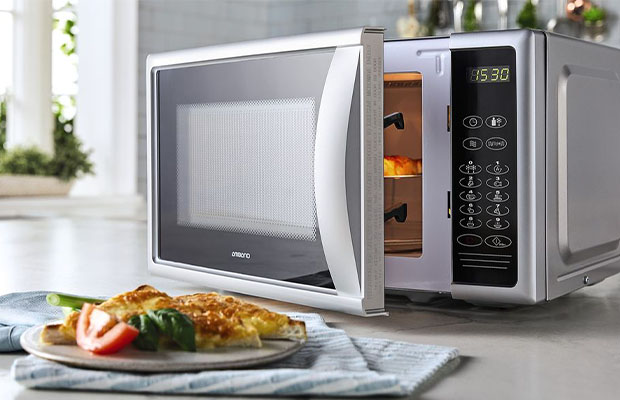Fish is always a nutritious homemade meal option, regardless of the season. There are numerous options for fish dishes, including simple one-pan bakes and whole fish that is pan-fried and served with a dollop of tartar sauce.
Fish handling procedures must adhere to strict food safety standards. Where should you store raw fish in a refrigerator? Always place raw fish and meat at the bottom of your refrigerator, below foods that are ready to eat. Two to three days after purchasing raw fish or seafood that has been stored in the refrigerator, it should be cooked.
Continue reading to learn more about how to safely and effectively store raw fish.
Table of Contents
Different Types Of Raw Fish
Edible Raw Fish
The fish market calls it sushi-grade, or sashimi-grade fish, one of the required ingredients for dragon roll sushi. “This fish is suitable for raw consumption if it is sushi-grade. Popular fish in this category include salmon, tuna, ahi tuna, halibut, Japanese mackerel, yellowtail, etc.
Most of the time, sushi-grade fish is caught fresh and sent to the store frozen to limit the risk of foodborne illness. They are expected to be consumed immediately after defrosting, as long as the methods used for defrosting fish follow food-safety regulations.
If somehow you manage to get your hands on a fresh and unfrozen sushi-grade fish and don’t intend to eat it any time soon, make sure to put it into the fridge as fast as possible.
The most difficult kind of fish to preserve is fish fit for sushi. When their best-before date expires, it is better to cook them rather than to risk giving yourself food poisoning.
Raw Fish That Requires Cooking
Unless the fish you intend to eat is marked as sushi-grade, it is NOT ADVISABLE to eat them raw at all. Consumers may occasionally die from the contaminants that are always present in these fish.
Any fish that do not fall under the aforementioned category can be considered a fish in this category. The list consists of any common freshwater fish like catfish, trout, and sunfish, and most migratory fish and seawater fish like eels, anchovies, and other flatfish varieties.
Marinated Raw Fish
The refrigerator must be used to keep raw fish while it is marinating before cooking. Before storing, they should be placed in a zip-top bag or glass container. Be aware that fish that has been marinated has a 2-hour shelf life in the refrigerator.
Importance Of Proper Raw Fish Storage
Fish is renowned for having delicate meat that can be prepared in a variety of ways. Despite this, fish, even when purchased from a seafood market, can easily spoil if not purchased fresh and stored correctly and promptly.
Fish come into direct contact with the water, which is also where the majority of foodborne illnesses are spread. Fish needs to be properly stored and cooked to the right internal temperature to avoid giving consumers food poisoning.
Fish spoilage may be caused by harmful bacteria or enzymatic processes. When fish is kept in a cold environment, both potential causes of spoilage can be greatly reduced or even avoided.
To maintain safety and freshness, raw fish is regarded as highly perishable food and must be handled carefully. Even when in transit, it can quickly spoil. When you keep fish in the refrigerator, the chilly environment significantly reduces the risk of spoilage. Therefore, it is always advised to store fish at a controlled temperature.
Where To Store Raw Fish In A Refrigerator?
Food handlers should place raw fish near the bottom of the shelf with other raw meats like beef and pork when deciding which shelf to keep it on. Between the ground chicken and the vegetables must be the storage shelf.
This refrigerator design is dictated by the need for heat processing of the foods kept there. Foods that require more extensive cooking should typically be stored at the bottom of the shelf, while prepared and ready-to-eat foods should be stored at the top.
Additionally, because no ready-to-eat food will undergo further processing, this arrangement prevents meat juices from dripping onto any such food. Proper food safety procedures include avoiding unnecessarily coming into contact with foods stored in refrigerators.

How Long Can Raw Fish Be Stored In A Refrigerator?
Fresh fish should only be kept in the refrigerator for a maximum of two days before cooking, according to general advice. After this period, you must determine whether the fish is still suitable for consumption or still possesses desirable qualities.
Because most pathogenic microorganisms cannot fully stop their growth at the refrigerator’s temperature, keeping fresh fish there poses a risk. Long-term storage causes the fish’s quality to continue to decline and can even raise the danger of food poisoning.
Steps To Fish Refrigeration Preparation
Four steps are involved in the storage of fish. To ensure the safety of your food and stop the fish from contaminating other foods in the refrigerator, you should strictly adhere to the instructions.
Step 1: Sanitize Your Hands
Prior to handling the fish, quickly rinse your hands in cold water. In order to prevent any instances of cross-contamination, this must be done.
Step 2: Remove The Fish From Its Original Packaging (optional)
Frozen fish is often available with optimal packaging so they do not need to be repackaged. To maintain quality, just make sure to keep it chilled until you put it in the refrigerator.
Fresh fish, on the other hand, needs to be taken out of the packaging. If it’s a filet, rinse it to get rid of any contaminants from the cutting process.
Step 3: Dry With Paper Towels
Before you wrap them in anything again, however, make sure to dry them thoroughly with paper towels. Since water is the perfect environment for bacteria to grow, the longer you can keep the fish, the better.
Step 4: Wrap The Fish And Cool It With Ice
Take a piece of ice and break it up. Wrap the ice in foil then place the fish on top with an aluminum sheet pan in-between. The fish must not be in direct contact with ice, so you must check this.
If you don’t have an aluminum sheet pan, plastic wrap or wax paper will do. Just be sure to cover all of the ice so that the fish only comes into contact with the wrapping. Zip-top bags can also be a good choice. Just be sure to remove as much air as you can from the bags.
Requirements For Fish Storage
The ideal storage temperature and the maximum storage time are the two main requirements when storing fresh fish to keep it safe and fresh. The stability of fish and whether it is suitable for use in various dishes can be determined by these two criteria.
You must take into account the proper placement of fish products in the original packaging in addition to these requirements. This is done to avoid contaminating other products that are kept with the fish.
Fish must be stored at a temperature of no less than 40°F (4°C) to remain safe and fresh. Within two days of purchasing it at the fish market and after storage, the fish can be eaten at its best under these conditions. Food workers must continuously check the storage temperature because it is crucial to food safety.
If the fish is stored correctly in a dry container with no additional water and at a temperature of 0°F (-18°C), it can be kept in the freezer for three months. As long as the containers are airtight, frozen fish or even frozen seafood is more stable than chilled food. Remember that the consistency of the storage temperature and the suitability of the container in which the raw ingredients are stored will determine the maximum storage time.
Where To Keep Fresh Fish?
A freezer with spotless surfaces would make it the best storage location for fresh fish. Fish quality is kept in good condition for a while at freezing temperatures. Refrigeration should be sufficient to preserve fresh fish if it will be prepared within the next two days of purchase.
To avoid leaks and spoilage, the fish must be pat dried before placing it in the refrigerator. To lessen the number of bacteria already present, it would be best if you also cleaned the fish pieces before storing them. It is unsafe to store fresh fish and other types of meat close to one another without adequate protection, even if they are held together.
How To Preserve Fish Without Refrigeration?
A maximum of two hours can pass while raw or fresh fish is left out of the refrigerator. Any foodborne illness has an exponentially increased risk of spreading after this point. Individuals with weakened immune systems, such as young children under the age of five, pregnant women, and the elderly, are most at risk. Is there another way you could store your fish if your refrigerator is already full? Luckily, there are!
In a restaurant without refrigeration, you can extend or even elevate the quality of your fresh fish by doing the following:
- Use an ice chest. To store and preserve the freshness of your fish in case your refrigerator breaks down or needs maintenance, use an ice chest with a block of ice or crushed ice. Your ice chest’s capacity will determine how long it can keep the temperature steady. Add salt to the ice to further reduce the chest’s temperature and lengthen the effect of the reservation. Since the temperature may drop more quickly than inside a refrigerator, this method necessitates close observation.
- Dry and season your fish. Actual preservation techniques are used in this procedure. Your fish will dry out faster if you salt it, which will also remove moisture from the meat. You can store your fish in an airtight container and keep it for a longer period of time once the moisture content has been reduced to a stable level through drying.
- Cook your fish. You have more time to keep the fish safe for consumption when it is partially cooked. Cooking procedures reduce the foodborne microorganisms already present in the fish and stop it from rotting quickly. The fish can be cooked and then steamed for later use.
- either brine salting or canning. With this method of preservation, whole fish or fish fillets can be kept fresh for nine months or longer. Glassware and a pickling solution are typically used when bringing. On the other hand, canning uses unique jars or cans and carefully monitored conditions to keep oxygen out of the food. In order to remove any potential dangers, the fish must be partially cooked before canning.
- Smoking. For areas where exposure to the sun is insufficient for drying, smoking is a fantastic preservation technique. This preservation technique gives the fish new, distinctive flavors, and it is frequently favored for the smoky qualities it adds. Depending on the kind of wood used to smoke, different outcomes are obtained.
Take Away
Freshness is the most important element that decides how long raw fish can keep inside your refrigerator. Always choose recently caught fish or frozen fish to ensure both flavor and quality.
Always store raw fish individually and below other foods in your fridge. The recommended time to store fish is different based on the type of fish and how you intend to consume it. If left at room temperature, raw fish will begin to spoil after 2 hours.
I’m confident you are equipped with the knowledge necessary to understand where to keep raw fish in a refrigerator. Please feel free to leave a comment if you found this article to be helpful and to share your experience with me and other readers.
Read Next Post: Can You Microwave Parchment Paper?



MOST COMMENTED
How to
How to Clean Homedics Humidifier: Detailed Guide
How to
Are Humidifiers Good for Pneumonia? Complete Guide
How to
Can You Put Drano in a Dishwasher? (Facts & Safe Alternative)
How to
How to Turn Subtitles on Or Off on Peacock TV: 2023 Guide
How to
How to Get Rid of Hollow Arrow on iPhone? 2 Simple Ways
How to
How to Mirror iPhone to TV Without WiFi: Complete Guide
Computers, Tablets & Printers
The 5 Best Printers for Cricut in 2022